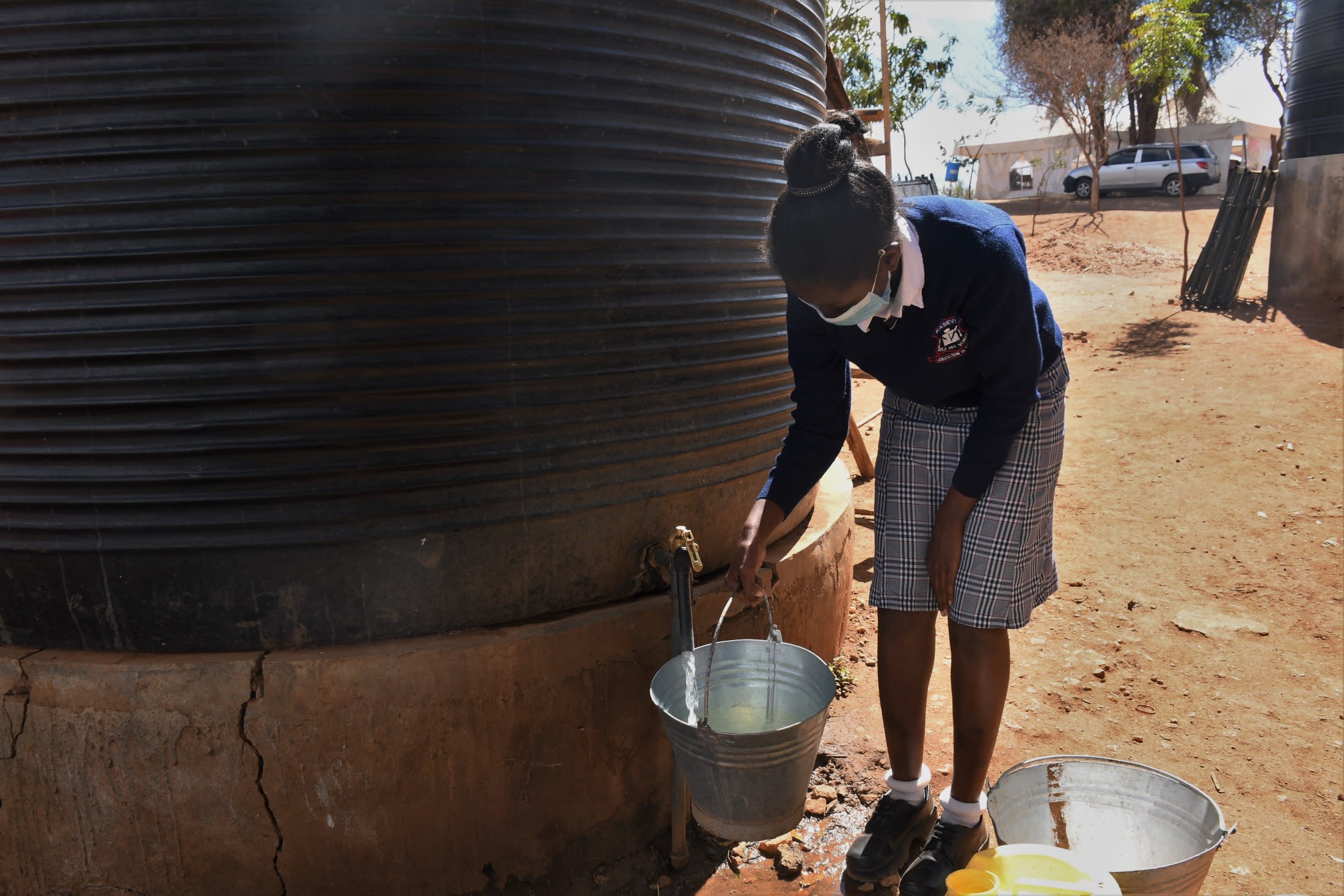Kasevi Girls Secondary School, whose motto is "Education is Power," operates as a boarding school with 326 students and 24 teachers. But the school is currently suffering from a water crisis that affects the students' ability to learn and their daily schedule in various ways.
Each student has a 10-liter jerrycan to fetch water after classes end at 4 o'clock each day, but often there is no water to be found. Without adequate water, the girls cannot shower and wash their clothes. Meals provided by the school are delayed, and classes begin late, so learning time is limited. The hygiene and sanitation of the school are also affected since students are unable to do most of their cleaning duties without water.
The school currently relies on several rainwater storage tanks. Still, they have a poor guttering system and limited capacity, so they cannot collect sufficient water to meet the demands.
When the tanks run dry, the school pays for alternative water piped to a tap near the school, but it only turns on twice a week. Because of the limited time available, it is challenging to fill all their current reserve tanks. The money spent purchasing water instead needs to support extracurricular and academic programs that would benefit the students.
Maureen K., a student, commented, "Currently in our school, we experience a great challenge of water scarcity. Our personal hygiene and sanitation as students is affected as we bathe occasionally, due to insufficient water in the school. There is no water for handwashing. We rarely wash our hands after visiting the latrines."

She continued, "We also lack clean water for drinking. The water that we are served is not treated and often leads to contracting water-related diseases such as typhoid and amoeba."
The communal water point broke down at one point, so the school had to find water elsewhere, and the only alternative was the local, contaminated river. It was unclean and very salty, and after drinking it, everyone in the school became sick with stomach aches, skin rashes, and even some cases of typhoid.
Currently, the water demand is higher than the supply, but the new rain tank and rehabbed guttering system will offer nearly five times more capacity. Students will be able to focus on learning without worrying if they have adequate water to drink and do their daily chores.
Rain Tank
We will build a 104,000-liter rain tank for this school, making the others look tiny in comparison. Because of how rarely it rains in Southeastern Kenya, this tank's large volume is designed to store as much water as possible during the seasonal rains, making more water available through the dry months. This water will benefit the students, teachers, and supplementary staff.
Parents will mobilize the materials needed for construction, including sand, stones, and water. They will also lend their strength and time to help with the construction. We will complement their materials with a skilled artisan to lead the project in addition to providing the tools, lumber, metal, cement, and gutter system.
As soon as the tank has time to cure, it can begin collecting rainwater for the school's use.
Training
We will train students and staff on sanitation, hygiene, and other topics for 1 day. Those in attendance will form a school health club that will promote good hygiene and sanitation practices both at school and at home. They will learn all of the steps to proper handwashing, how to treat water, and how to keep their environment clean. The school will also be taught how to best oversee and maintain their new rain tank and handwashing stations.
Handwashing Stations
A total of 3 handwashing stations will be installed upon the project's completion and before training. These are 1,000-liter plastic tanks fitted with 3 taps each, allowing 9 students to wash their hands at once. The student health club and school management will be responsible for making sure the tanks are filled with water and that a cleaning agent such as soap or ash is always available.

 Rainwater Catchment
Rainwater Catchment
 Rehabilitation Project
Rehabilitation Project
































